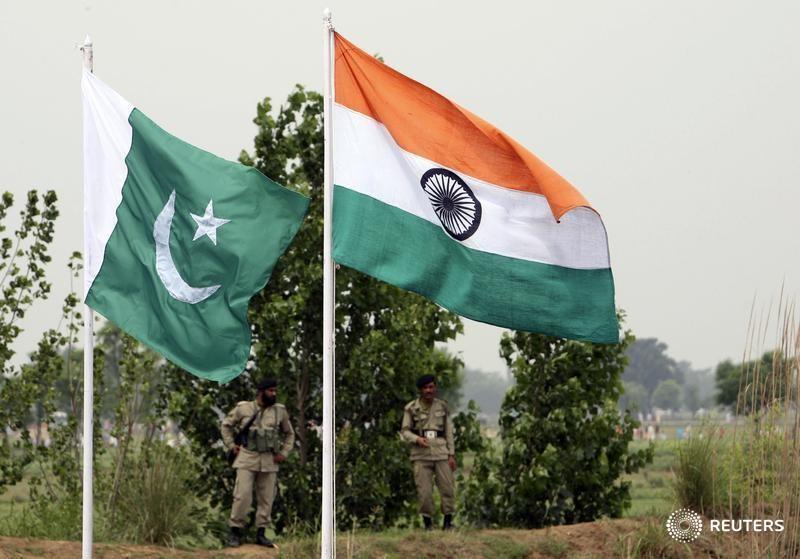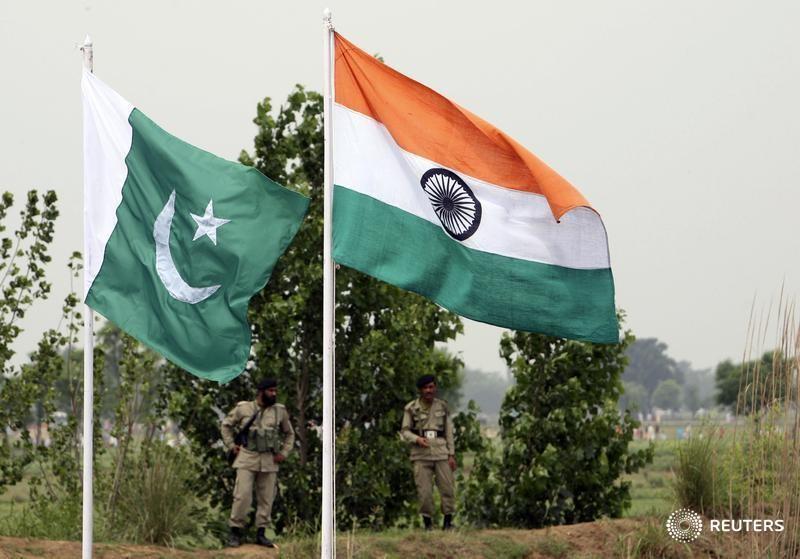With global attention fixed on Ukraine, you could be forgiven for missing something that would have been major news in more normal times: An Indian cruise
warontherocks.com

National security.
For insiders. By insiders.

THE CURIOUS CASE OF THE ACCIDENTAL INDIAN MISSILE LAUNCH
CHRISTOPHER CLARY
MARCH 17, 2022
COMMENTARY
With global attention fixed on Ukraine, you could be forgiven for missing something that would have been major news in more normal times: An Indian cruise missile landed in Pakistan last week. It appears to have been an accident and, thankfully, it appears to have been unarmed, but any missile fired from one nuclear-armed country at another demands closer scrutiny. The episode raises a series of questions about safety and security procedures that Indian authorities need to address. Perhaps this accident will even prompt India to reconsider long-dormant diplomatic proposals to reduce nuclear risks in South Asia.
What do we know about the episode so far? On March 9, shortly after sundown, a cruise missile was launched from somewhere in western India. According to a
briefing from Pakistan’s Inter-Services Public Relations directorate, the missile was located in the vicinity of Sirsa, India, at 7:13 p.m., then proceeded to fly at a high altitude in a southwesterly direction, before making a gradual right turn south of the Indian city of Suratgarh in the direction of Pakistan. It then crossed the international border before flying more than 100 kilometers into Pakistani airspace, where it eventually crashed harmlessly near the small Pakistani city of Mian Channu. Its total flight time was less than seven minutes.
BECOME A MEMBER
After two days of silence, the government of India
acknowledged that “in the course of a routine maintenance, a technical malfunction led to the accidental firing of a missile.” While the full course of correspondence between India and Pakistan has not been revealed, several
media accounts indicated the dedicated army-to-army hotline was not used to inform Pakistan of the errant missile. Pakistan’s national security advisor also
criticized India for not having informed Pakistan “immediately,” and foreign ministry
statements imply that India did not acknowledge the flight until after Pakistan had briefed the media.
While Pakistan’s public posture was forceful in criticizing India for the accident, condemning India’s “callousness and ineptitude,” its overall response was “low-key,” as the
New York Times observed. Subsequent media accounts have
suggested Pakistani authorities had considered and perhaps even prepared for retaliation until its assessment of the crash site found no meaningful damage on the ground. The Pakistan military’s conclusion that the missile was “
certainly unarmed” may have contributed to their decision to respond with public derision and nothing further.
The Indian defense minister
told parliament that a review of India’s maintenance and safety procedures was underway, along with an inquiry into the causes of the launch. Luckily, the apparently accidental launch occurred during a boring Wednesday evening for the subcontinent’s sometimes fraught interstate politics. The 2019 Balakot crisis, though, offers a template of circumstances in which an errant cruise-missile launch could have proved catastrophic rather than merely embarrassing. That earlier crisis had begun following a suicide-bomb attack on Indian paramilitaries in Kashmir, which had led to tit-for-tat standoff air attacks between the Indian and Pakistani air forces. In the course of those skirmishes, an Indian pilot was shot down and captured by Pakistan. According to
subsequent accounts, India threatened to escalate violence further if its pilot was not returned unharmed, including reportedly explicit threats to launch a missile attack on Pakistani targets. Prime Minister Narendra Modi later told campaign crowds he had threatened a “
qatal ki raat” (a night of bloodshed) if the Indian pilot was not released. As Vipin Narang and I
commented at the time, “South Asia was a couple of wrong turns away from serious escalation.” It does not take a particularly creative imagination to conclude that an inadvertent missile launch in that atmosphere might have led to something different than a somewhat staid Pakistani press conference.
Sometimes accidents happen despite the best protocols and training. Scott Sagan has argued famously that there are “
limits of safety” both because of the sheer randomness of existence and because of organizational pathologies that manifest even in military units that prize safety as a mission. The U.S. nuclear weapons and missile safety track record is hardly
inspiring. Yet even grading on a curve, India’s inadvertent launch stands out. While deadly military accidents were disturbingly common during the Cold War, last week’s episode may be the first inadvertent launch of a cruise or ballistic missile by one nuclear power unto the territory of another nuclear power. Additionally, while accidental launches often occur during exercises, their occurrence during routine maintenance is less common, if for no other reason than typically there are numerous physical safeguards to prevent a missile’s flight in such circumstances. Thus, when a Pershing 2 misfired during maintenance in Germany in 1985, the missile remained stationary and clamped to its launcher “because it was not in a firing configuration,” the U.S. Army
explained. There are
tales among old artillery officers of missiles launching without such clamps removed, resulting in launch vehicles being dragged into the air and crashing a short distance later. What positive steps do Indian crews have to take before their missiles can be fired? Do design or procedural changes need to take place to prevent a recurrence of this episode? Hopefully India’s inquiry will seek to answer these questions.
The other disturbing characteristic of this episode is India’s apparent lack of haste in communicating with Pakistan about the accident. No state would like for its advanced technology to land in the territory of an opponent, in part because of the potential compromise of technology and secrets that exploitation of the crash site would offer. Perhaps India hoped Pakistan would simply not notice, or that it wouldn’t find the debris. Alternatively, perhaps India was uncertain as to the missile’s trajectory and assumed that it had not strayed into Pakistan. The Indian defense minister
told parliament that after the accident, “it was later learnt that the missile had landed inside the territory of Pakistan.” How much later? He didn’t say. What seems to have been a two-day delay in notification appears to contradict India’s obligations under a
1991 agreement with Pakistan on preventing air space violations which obligates both sides “if any inadvertent [airspace] violation does take place, the incident will be
promptly investigated and the Headquarters (HQ) of the other Air Force informed of the results
without delay, through diplomatic channels” [emphasis mine].
Almost a decade ago, I
argued that India’s opacity about safety and security issues was inconsistent with its nuclear-weapons status and its great-power aspirations. “Closed organizations develop pathologies that are often harmful to the broader public interest,” I worried. Whether India’s opacity contributed to this episode is uncertain. The changing nature of India’s explanation in these early days has not been reassuring. Was the accident a result of “routine maintenance,” as India said in its
official press release of March 11? Was it the result of “
routine maintenance and inspection,” as India’s defense minister told parliament on March 15? Was it the result of a “
simulation exercise” gone awry, as one of India’s largest newspapers reported on March 16? Transparency seems needed here, if for no other reason than to convince the Indian public that they are safe from accident. A majority of the missile’s flight trajectory, after all, was over Indian territory — Indian cities, towns, and villages that might have suffered from this accident that mercifully caused no harm to either country.
In addition to visible oversight at home and fulfilling the obligations of prior confidence-building measures, India may wish to consider whether new confidence-building measures are appropriate to demonstrate its safety and security credentials. With back-channel talks between India and Pakistan
apparently stalled on the difficult issues surrounding Kashmir, confidence-building measures can give diplomats and militaries a chance to show that meaningful progress is possible even as political dialogue continues. A
proposal to establish dedicated, secure lines of communication to discuss nuclear-related issues has been
on the table for almost two decades, and such a “hotline” would have been a more natural forum to discuss last week’s accident than the existing link between India and Pakistan’s senior army officers. Similarly, though it is unlikely to have averted this accident,
adding cruise-missile flight test notifications to the existing ballistic-missile flight test notification regime between the two countries seems like a good idea. Additionally, it is still uncertain why India’s missile pursued the path that it did. Was it unguided? Was it heading to a specific target but for some reason failed to reach it? The episode does seem to reinforce the wisdom of a
1994 agreement between the United States and Russia to target their long-range ballistic missiles to open ocean areas by default, so that in the absence of an explicit input of target coordinates the missile would fly to an area where it could do no damage. While the short range of some Indian and Pakistani nuclear-capable missiles likely precludes open ocean as a default target, both countries could declare that they will set the guidance systems of their weapons by default to unoccupied areas, such as the vast Thar desert, where they pose as little danger as possible. Using actual coordinates for an adversary target in an exercise, as
some of the admittedly contradictory reporting suggests occurred in this case, seems exceptionally ill-advised and should be stopped if it has been a past Indian practice.
It is impossible to wring all the risk out of dangerous weapons. Brinksmanship works, to some extent, because the processes that unfold during a crisis are only partly controllable. They produce “
threats that leave something to chance.” Yet the missile episode reinforces that policymakers should be under no illusions that they can fully control these weapons. Military organizations make mistakes, those mistakes cause accidents in peacetime, crisis, and war, and those accidents can be dangerous and deadly. While a full accounting of the causes of the March 9 launch remains to be done, and may never become publicly known, it is consistent with numerous odd and bizarre accidents that have occurred before in nuclear-armed militaries. “Things that have never happened before happen all the time in history,” Sagan
observed three decades ago. Inadvertent cruise-missile launches on nuclear opponents are now definitively no longer on that “never happened before” list. We will be lucky if the next surprise is similarly inconsequential.
BECOME A MEMBER
Christopher Clary is an assistant professor of political science at the University at Albany and a nonresident fellow with the South Asia program of the Stimson Center in Washington, D.C. His book, The Difficult Politics of Peace: Rivalry in Modern South Asia, will be released by Oxford University Press this summer.
Image:
Press Information Bureau (Government of India)














